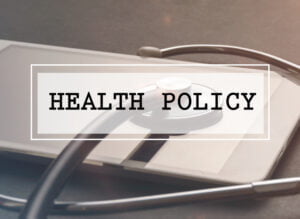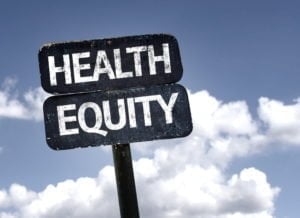Population Health News Roundup: November 2021
JoAnne DyerIAPHS Members in the News
Sandro Galea’s new book, The Contagion Next Time, is now available. Dr. Galea asks the question, How can we create a healthier world and prevent another pandemic crisis next time? Hear Dr. Galea at a virtual tour stop, or pick up a copy of the book.
Rita Hamad in Health Affairs Blog: Current paid leave policies don’t reach all workers, but doing so could not only improve vaccination rates, it could also help businesses, since sick employees. Without a guaranteed minimum benefit amount, lower-income households may still not be able to use paid family leave. (October 25, 2021)
Researchers at NYU Langone (IAPHS Institutional Member) in JAMA Network Open: Neighborhoods with nearby fast-food restaurants had increased risks of diabetes in settings both rural and urban. (October 29, 2021)
Sara Curran is spotlighted by the University of Washington. Curran’s interdisciplinary work includes directing the Center for Studies in Demography and Ecology. (November 2, 2021)
Roland J. Thorpe, Jr. in the Journal of the American Geriatrics Society: Among Medicare beneficiaries 65+, “Social isolation is associated with higher levels of biological markers (IL-6 and CRP).” These findings “inform the pathway between social isolation and morbidity and mortality among older adults.” (October 26, 2021)
Rita Hamad in Women’s Health Issues: The Earned Income Tax Credit (EITC) was associated with an increase in birthweight for Black women but not for White women or women of other races. (October 12, 2021)
Kathryn Leifheit in Social Science & Medicine: “Estimates suggest preventing eviction may be a powerful, cost-effective way to safeguard children’s cognitive development.” (November 8, 2021)
Health Disparities
The COVID-19 gap is also a grief gap: Communities of color have experienced higher rates of pandemic-related deaths, and are now experiencing a greater grief burden as well–a burden that . Grief has its own (“often overlooked”) health consequences. (Washington Post, November 4, 2021.)
Insulin prices and racial health equity: The need to reduce insulin costs is urgent, especially in our drive to improve racial health equity. (The Lancet commentary, November 13, 2021)
Unequal access to high-speed broadband Internet access can worsen health disparities: Both private and public sector actions are needed to close the gaps. (StatNews, November 12, 2021)
Built Environments and Place
Black students benefited the most when NYC got the lead out: NYC reduced lead in drinking water in public schools, and “Black students had the biggest decrease in lead exposures.” (Bloomberg CityLab, November 4, 2021)
Increase in U.S. traffic deaths a “crisis”: Prioritizing cars over transit is one factor citied as contributing to a significant increase in traffic deaths in 2021. A new government approach touts a “safe system approach” to make driving and post-crash medical care safer. (Grist, November 4, 2021)
Urban public spaces can lead to equity: Parks, libraries, and civic spaces can help disadvantaged communities achieve better “physical and mental health, better brain function in children, more self-reported happiness…” and more. (Governing.com, November 4, 2021)
Environmental Health & Justice
New map shows areas of high pollution and high risk: ProPublica has created a map that shows areas across the U.S where pollution levels exceed EPA thresholds, putting over 250,000 million people at higher risk of cancer. Black neighborhoods face double the risk of majority-white census tracts. (ProPublica, November 2, 2021)
Ozone levels are still too high in some cities–and is increasing along Colorado’s Front Range: The World Health Organization suggests that the safe limit for ozone levels be reduced. (Kaiser Health News, November 10, 2021)
Park access is a social justice issue: Neighborhood parks aren’t equally accessible to everyone. Equity is needed, and Congress has introduced legislation to help. (Reckon South, October 21, 202)
Health Policy
 Laws restricting tobacco purchase to 21+ face barriers in uneven adoption and compliance: Although the number of state and local tobacco 21 (T21) policies have increased from “1.4% of zip codes in 2015 to 40% in 2019,” not all areas of the country have adopted these policies equally. To really reduce tobacco-related health disparities, unified enforcement and resources and interventions are needed in vulnerable communities. (Tobacco Induced Diseases, September 2021)
Laws restricting tobacco purchase to 21+ face barriers in uneven adoption and compliance: Although the number of state and local tobacco 21 (T21) policies have increased from “1.4% of zip codes in 2015 to 40% in 2019,” not all areas of the country have adopted these policies equally. To really reduce tobacco-related health disparities, unified enforcement and resources and interventions are needed in vulnerable communities. (Tobacco Induced Diseases, September 2021)
Improved re-entry programs could improve the health of people after incarceration: Access to Medicaid before release and coordination of health care after release are recommended in this policy brief. (Health Affairs, October 28, 2021)
The coming long-term care crisis faces a lack of policies to help: As boomers retire, they’ll need care and support, yet many boomers haven’t saved enough for retirement, let alone the high costs of long-term care. (CNBC, November 8, 2021)










All comments will be reviewed and posted if substantive and of general interest to IAPHS readers.